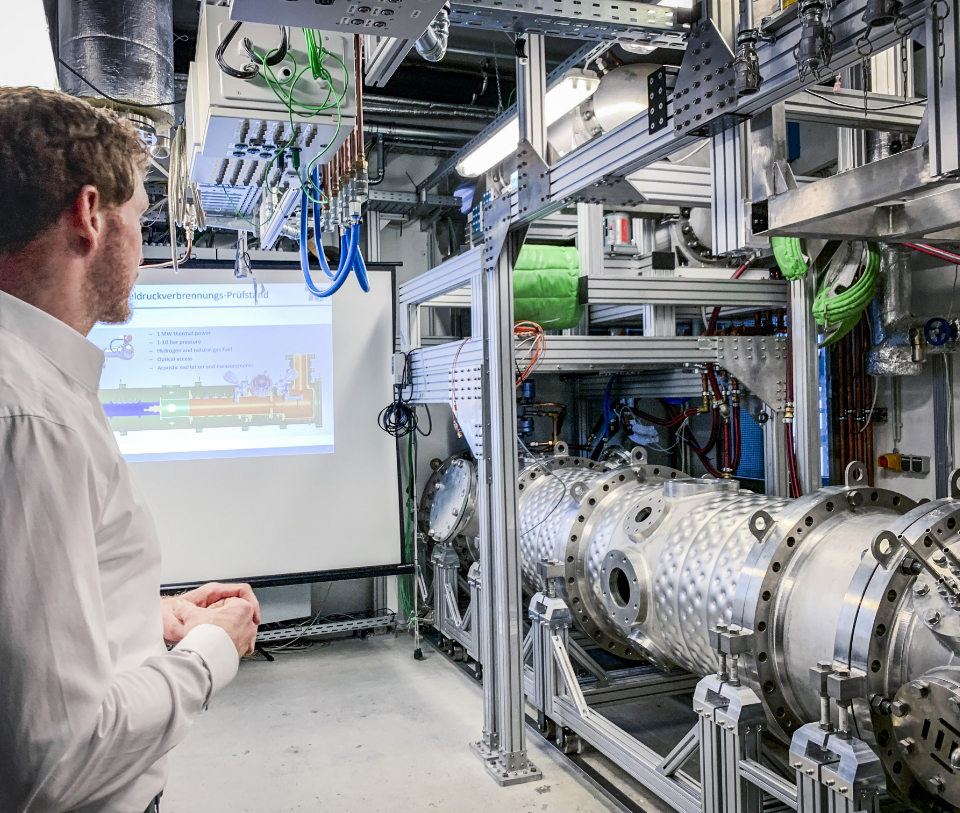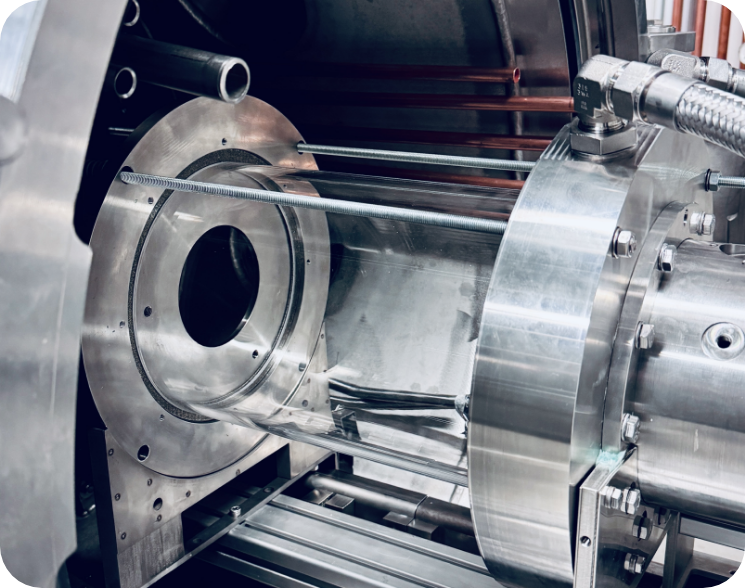ACHIEVE towards a carbon-free future
At ACHIEVE, our mission is clear: to help pave the way for net-zero carbon energy production by 2050. We’re committed to bridging the gap between renewable energy and reliable power generation by harnessing the potential of hydrogen and hydrogen blends. Gas turbine technology has emerged as a crucial solution for filling the gaps left by renewables. However, traditional gas turbines rely on carbon-based fuels, which are incompatible with decarbonization goals. This presents a significant challenge for achieving clean energy targets while ensuring energy security and reliability.


Hydrogen as a solution for pollutant gas reduction
The primary goal of ACHIEVE is to develop and validate solutions for the stable combustion of unconventional hydrogen (H2) blends in gas turbine installations while reducing pollutant gases, specifically carbon dioxide (CO2) and nitrogen oxides (NOx). These blends may include combinations of hydrogen, ammonia (NH3), methane (CH4), nitrogen (N2), and water vapor (H2O). ACHIEVE aims to build a comprehensive knowledge base and validate solutions at Technology Readiness Level 4 (TRL4). This means that the solutions have been tested in a relevant environment (e.g., laboratory or simulated conditions) to demonstrate their effectiveness.
Why ACHIEVE Matters
Our work isn’t just about reducing emissions—it’s about ensuring a reliable energy supply for future generations. By making gas turbines compatible with clean hydrogen blends, we’re creating a pathway towards a sustainable energy future that’s both environmentally sound and economically viable
Specific objectives
Evaluate the performance of unconventional H2 blends in conventional swirl-stabilized and novel combustors (jet, MILD, EGR, high steam content, sequential combustion)
Validate up to 5 bar (TRL4) stable, low-emission, fuel flexible combustors (conventional swirl-stabilized and novel) and their associated modelling tools
Develop and validate a real-time monitoring system for flames of unconventional H2 blends
Improve understanding of thermoacoustic instabilities of unconventional H2 blends
Develop chemical kinetics tools and reduced mechanisms to evaluate emissions for unconventional H2 blends
Develop novel computational tools to improve the predictive capability of CFD of unconventional H2 blends
The ACHIEVE project takes a multi-faceted approach to address these challenges:
Research & Development
We’re conducting cutting-edge research into the combustion dynamics of unconventional hydrogen blends in gas turbines. By deepening our understanding of these blends, we’re paving the way for their widespread adoption in the energy sector.
Validation & Testing
Our team is developing and rigorously testing solutions for current gas turbine engines to enable the combustion of hydrogen blends with reduced emissions. Through real-world validation, we’re ensuring the reliability and effectiveness of these solutions.
Innovation
We’re pushing the boundaries of technology by designing novel combustor systems for future turbines. These systems promise lower emissions, improved performance, and greater operability across a wide range of hydrogen blends, driving the energy transition forward.
©TU Berlin Chair of Fluid Dynamics
Focus Areas
Develop technology and solutions for current gas turbine engines equipped with conventional swirl stabilized DLE (Dry Low Emission) combustion systems.
Develop novel combustor systems for future gas turbines that emit significantly lower emissions and operate more efficiently across a wider range of unconventional hydrogen blends.
Experimental Approach
ACHIEVE will conduct experiments and develop kinetic models to understand the chemistry of excited radicals in hydrogen/ammonia/nitrogen fuel blends. This understanding is crucial for developing a chemiluminescence-based flame sensor.
Numerical Approach
ACHIEVE will investigate numerically the fundamental features of unconventional H2 blends, including NOx formation,chemiluminescence indicators, intrinsic flame instability. Novel LES models will be developed, specifically targeted to H2 blends.
Flame Sensor Development
The project aims to create a chemiluminescence-based flame sensor capable of real-time monitoring of the combustor’s status. This sensor will simultaneously measure multiple chemiluminescent species to provide instant feedback on the flame’s condition.
Real-Time Monitoring and Control
The developed sensor will enable real-time monitoring of various parameters such as power output, emissions, and stability of the combustor. It will also facilitate the execution of mitigating actions to optimize the power plant’s performance even when the fuel supply is changing.
Expansion and Enhancement
The project plans to extend and improve the monitoring and control system by incorporating additional parameters such as ammonia content (using TDLAS – Tunable Diode Laser Absorption Spectroscopy), stability precursor identification (using dynamic pressures), and exhaust gas composition (using a fast lambda probe for oxygen concentration).